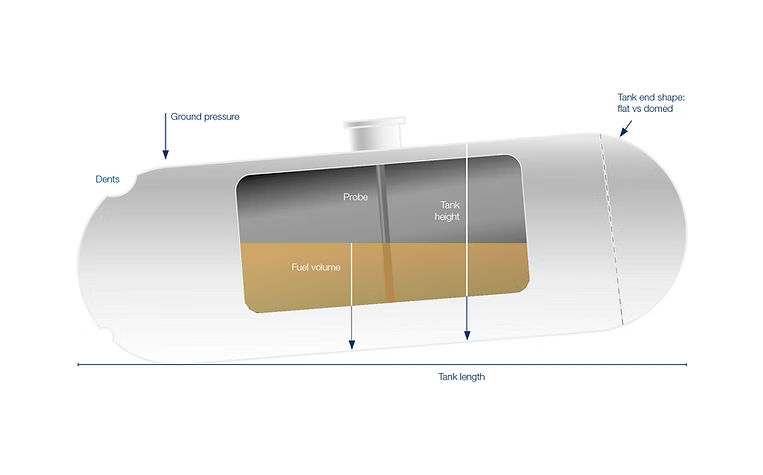How tank calibration affects wetstock management
Published on April 06, 2021
A well-calibrated tank gauge benefits your business by providing you with accurate, on-demand stock readings. If your gauge is poorly calibrated, it may result in fuel losses going unnoticed, which could ultimately impact upon the profitability of your business. Without accurate calibration, gauge readings are often erratic, which can cause any real instances of fuel loss to be disguised in the data.

What impacts the calibration of my gauge?
There are many factors which can affect the accuracy of your tank gauge. Over time, underground tanks are subjected to large amounts of pressure from the earth under which they are buried, which can cause the tank to become warped or dented, or may result in the tank moving from its original position. Subsidence can also affect calibration, causing data to corrupt.
Other factors can also impact on the accuracy of a tank’s calibration, such as offset probes, the length and diameter of the structure, and the shape of the tank end (e.g. domed or flat). It is also possible that your gauge may have been set up incorrectly, or could have been affected by an engineer or contract work carried out on site.
How do I know if my gauge needs recalibrating?
You may already know if your gauge is performing inaccurately, particularly if you notice highly erratic readings that do not clearly reflect your fuel sales. However, sometimes it is not instantly obvious that a recalibration is required; this is where third-party fuel monitoring services can help. Analysts are able to scrutinise site data on a daily basis and through advanced reconciliation techniques, can identify a poorly calibrated gauge quickly before any loss of profit is incurred.
Most modern gauges are fitted with an auto-recalibration function, which can periodically be set to analyse your tank and update any inconsistencies in the data. Whilst these recalibration functions do offer some benefits, they are not able to recognise the presence of any leaks. This means that, when a gauge performs auto-recalibration, it may end up ‘building in’ a leak and accounting for it as normal tank performance, especially if the leak is gradual yet steady over a long period of time.
There are many methods of carrying out tank gauge recalibration, all of which will differ slightly depending on your service provider. At Dover Fueling Solutions®, we specialise in remote recalibration, due to the minimal disruption the service causes to the site’s operation. Typically, we calculate twenty volume points that best capture the tank’s fuel movements over time, and measure the height-to-volume ratio in regular increments across the entirety of the tank’s height. The results are then uploaded to the gauge’s memory and a new strapping table is created. The table allows the gauge to accurately process stock levels that reflect the true nature of the tank’s structure and positioning.
Although a strapping table created by this method is often the most effective, we are also able to use an increased number of volume points when tanks are especially problematic, dependent upon the make and model of the gauge.
.jpg)
Key benefits of a well-calibrated tank gauge on your fuel business
There are many benefits to investing in recalibration services, including a reduction in false gauge alarms that can be triggered by erratic data, such as tank overfill or sudden loss alerts. Furthermore, because recalibration significantly improves the accuracy of stock level readings, you are able to opitimise your deliveries, safe in the knowledge that your gauge is truly reflecting the remaining ullage in the tank and reducing the risk of any overfill or spillage occurring.
Other benefits include:
- Accurate, on-demand fuel stock readings
- Improved fuel stock management
- More accurate reporting capabilities
- Easy verification of fuel deliveries

Contact us today to speak to a wetstock specialist or call our UK-based office on +44 (0) 1695 52175.



